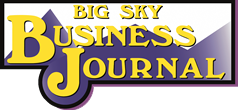Counter Intuitive Sales Ideas that Work
Some sales ideas that at first glance may seem counter intuitive were recently recommended in Inc. magazine. The ideas are based upon human psychology and their instinct to assure that they are in control.
For example, right up front, tell the customer in one way or another that they don’t have to buy. Telling someone they don’t have to buy can paradoxically make them more likely to do it. It’s all about autonomy bias – -a psychological need we all have to feel in control of our decisions. No one wants to feel pushed or cornered. Make your ask, and then follow it with a simple statement like, “But you are free to decide.” Studies show this can double the likelihood that someone will say yes. Why? Because you’re giving people the freedom to choose, and that makes them more open to doing what you ask.
Another idea is don’t tell customers how much they will save. Instead, point out how much they will lose. It conveys the same information but addresses everyone’s natural instinct to avoid loss. Simply put, people are twice as motivated to avoid losing something as they are to gain something. For example: Researchers told homeowners they could “save 50 cents a day” by insulating their homes or “lose 50 cents a day” by not insulating. The second message resulted in 150 percent more people taking action. Same exact information, different framing.
If you’re running a sale, instead of saying “Save $20 today,” try “You’ll pay $20 more tomorrow.” It’s a subtle but powerful reframe that leverages people’s fear of missing out to drive immediate action. The key is honesty. If the sale really does end tomorrow, you’re doing your customers a service by letting them know.
Another idea – start with your highest price.
When listing prices, it’s tempting to lead with the lowest option to avoid scaring people off. But starting with your highest price can actually boost revenue. It all comes down to anchoring—our tendency to rely heavily on the first piece of information we see. Researchers tested this with beer prices in pubs. When menus listed beers from most to least expensive, revenue increased by 4.2 percent. “When you anchor on the highest price first, everything beneath it looks more attractive. It’s easier to get someone from $30 to $22 than from $13 to $22..
For founders worried about price shoppers, you should display all options clearly, starting with the highest. This way, customers see the affordable choices in context, making them feel like a better deal.

0 comments